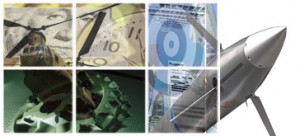GERMAT™ provides knowledge-based assistance for neural network and fuzzy logic modeling, helping the U.S. Army to significantly improve battleground classification, target/decoy recognition and discrimination, logistics forecasting, intelligent data fusion, data mining, knowledge discovery, and optimization.
Neural networks and fuzzy set theoretic models offer promising results in performing complex mappings and reasoning in a wide variety of commercial and military domains. Although these technologies have been applied extensively for over a decade, their use in complex, real-time domains is just beginning to be tested. With the advent of recent, more robust and “non black-box”-like algorithms [such as wavenets and Fuzzy Associative Memories (FAMs)], these technologies exhibit even greater promise and potential. These new generation information processing systems provide capabilities like adaptability, robustness, generalization, and the ability to work amid the imprecision and uncertainty of the real world–an ability which makes them especially attractive. Neural networks in particular offer massive parallelism and future promise for hardware implementation and are ideal for applications such as forecasting, classification, pattern recognition, customer analysis, data mining, fraud detection, function fitting, etc.
This Army-funded initiative developed decision aids for the automated design and generation of intelligent information processing agents. Specifically, the initiative automated the process of designing hybrid neural net/fuzzy logic models from a domain expert’s/end user’s description of a problem situation and a set of domain data. These developments addressed the historical shortcomings of neural networks (inaccessibility, lack of structured methodologies for using and reusing networks, and the lack of knowledge-based support) by providing knowledge-based assistance to the development of neural network and fuzzy logic models. In the course of the initiative, KBSI researchers developed a theory of neural network modeling, identified issues involved in using neural networks and fuzzy logic, and designed knowledge-based assistance that can be provided to neural network and fuzzy logic modeling.
 A key product of this effort is the Generalized Event Representation Modeling and Analysis Tool (GERMAT™) that automatically generates trained neural network architectures and Fuzzy Associative Memories (FAMs) starting from a structured description of a problem situation. The GERMAT™ application is now successfully deployed in several major U.S banks for intelligent cash deposit and withdrawal forecasting and cash inventory management. GERMAT™ applications planned in 1998 and 1999 include intelligent reconnaissance data analysis for the Army and intelligent management of multi-modal ship maintenance data for the Navy SmartShip program.
A key product of this effort is the Generalized Event Representation Modeling and Analysis Tool (GERMAT™) that automatically generates trained neural network architectures and Fuzzy Associative Memories (FAMs) starting from a structured description of a problem situation. The GERMAT™ application is now successfully deployed in several major U.S banks for intelligent cash deposit and withdrawal forecasting and cash inventory management. GERMAT™ applications planned in 1998 and 1999 include intelligent reconnaissance data analysis for the Army and intelligent management of multi-modal ship maintenance data for the Navy SmartShip program.
Our vision is that the technology seeded through the GERMAT™ initiative will do for Neural Networks and Fuzzy Logic what the first visual programming environment has done for application programmers. Specifically, the most significant benefit of the GERMAT™ application is that it provides access to sophisticated technology for a wide audience of potential users so that the power of these technologies can be rapidly exploited/realized for practical applications in military and commercial user communities. Other key benefits include (i) significant reductions in the time and cost for building high quality decision support models and (ii) a wide range of important defense and commercial applications including battleground classification, target/decoy recognition and discrimination, logistics forecasting, intelligent data fusion, data mining, knowledge discovery, and optimization.
